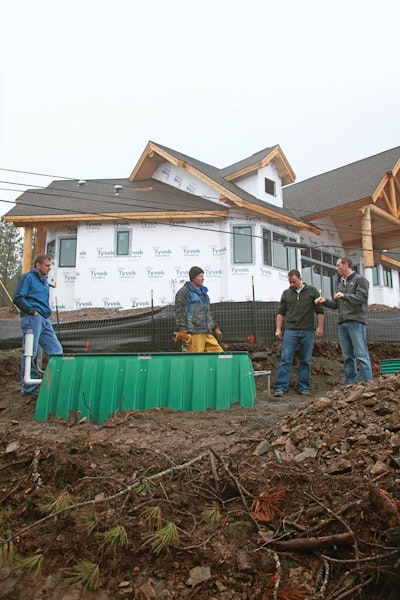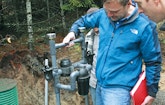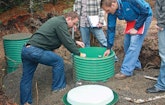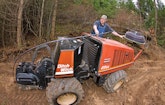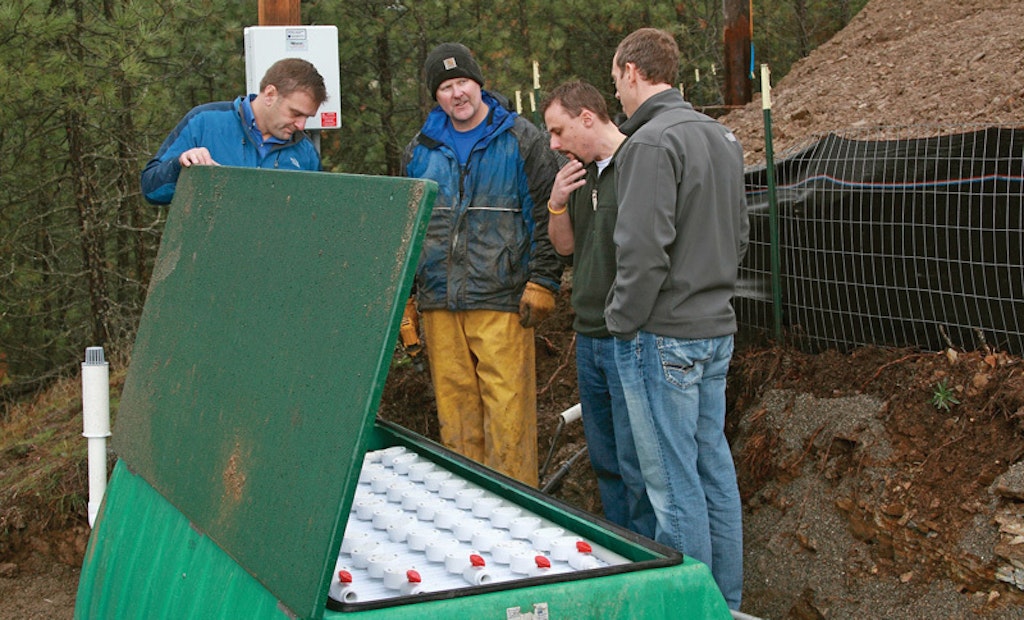Interested in Education/Training?
Get Education/Training articles, news and videos right in your inbox! Sign up now.
Education/Training + Get AlertsBy inventing new products and finding innovative ways to deploy emerging onsite technologies, R.C. Worst & Company stays on the cutting edge of the onsite scene across Idaho and eastern Washington.
Allen Worst, company vice president, is part of the third generation of the Worst family involved in the business his grandfather, Robert Charles (R.C.), started in 1953. Allen’s brother Ken is president. “We started as a general contracting company,” Allen Worst says. “When R.C.’s son Jim, a mechanical engineer, joined the business, he was instrumental in developing a significant engineering capability that set us apart from our competitors.”
This engineering skill brought a focus on water systems that incorporate pumps and control systems. When Allen came on board in 1994, the focus broadened to include onsite systems. Today, pump-involved water or wastewater systems are the company’s niche, and the firm seldom takes on projects that do not involve pumps.
In addition to onsite system installation, generally confined to a 100-mile radius from the main office in Coeur d’Alene, Idaho, the company sells onsite technologies, pumps and control systems to installers across its whole “inland northwest” service territory. R.C. Worst is an Orenco AdvanTex distributor. The business mix includes 40 percent new installations, 20 percent repairs, 20 percent service, and 20 percent design, component and system sales.
Flexible asset
Having a professional engineer on staff still provides a competitive advantage. Even when not required, regulators like to see a P.E. seal on designs and other system documents. While competitors use consulting engineers, Worst’s engineer, Ray Koberstine, P.E., stationed at the company office in Spokane, Wash., is always available to technicians and clients.
“When our wholesale technology customers, such as other installers, need engineering expertise, they can call on Ray’s support,” Worst says. The company can convert some engineering hours to billable hours or roll that expense into the cost for hardware sold.
“Either way, making our engineer’s expertise available to our customers makes their projects and services more valuable to their end users,” Worst says. “It is a win-win.”
Perhaps the most unique aspect of Worst’s installation business is the absence of earth-moving machinery. “We don’t create large absorption area excavations that are typical of conventional systems,” Worst says. “Because we are so focused on pump-involved systems, our greatest need is for a vibratory plow to introduce drip tubing for effluent dispersal.”
The company deploys a 1999 Ditch Witch 410sx trencher but sees no need to carry the expense of other equipment beyond two forklifts and a number of pickups and service body trucks. The forklifts work on warehouse and manufacturing tasks at company headquarters.
Contractors handle excavations for AdvanTex systems and tanks the company supplies. “We are involved in a very large number of installations, yet we simply don’t do excavation,” says Worst. “That is a fact many in the onsite industry find rather shocking.”
Overcoming climate
It gets cold in Idaho: Frost routinely extends to four feet deep. “We have seen drip system controls, sometimes called a headworks or hydraulic unit, freeze up when placed in shallow, open-bottom plastic enclosures,” Worst says.
When that happens, no effluent is delivered to the drip tubing which, while technically frozen, is mostly empty because the tubing is self-emptying. The headworks is the most expensive component in a drip system, and when it freezes, the ice causes massive damage.
Recognizing this weakness, Worst called on the company’s engineering expertise to redesign the headworks. Now the headworks is not placed in a separate enclosure but in the upper reaches of the dosing tank. In this relatively warm environment, freezing is all but eliminated, and effluent flow is uninterrupted. The warmer headworks location gives greater thermal protection to the supply and return lines at their connection points.
Worst identified another weakness in drip systems related to what he feels is inadequate drip zone backflushing. Using a fixed orifice, he can better control return flow, which in turn assures effective flushing.
“It’s essential to ensure that each site-specific design maximizes the system’s capabilities and assures continuous flushing,” says Worst. “To accomplish that, we developed a software tool that correlates flush and dispersal needs and then specifies the emitter requirements and pump settings. The software also specifies delivery pressure, velocity, and flow rates. These can be incorporated into a permit and become permanent operation benchmarks.
“Substituting a fixed orifice device eliminates the customary solenoid valve or flow-control ball valve. Without an adjustable valve, there is no opportunity for the homeowner, vibration or an inadvertent hand movement to alter the intended delivery pressure or volume.” The somewhat less accessible location in the dose tank also reduces the likelihood of homeowner tinkering, Worst observes.
Mandate brings opportunity
Reaching beyond installation, R.C. Worst & Company created Idaho Onsite Services to serve the owners of every AdvanTex treatment system in Idaho. Allen Worst is president of that entity. The new company was a response to a state regulation requiring every owner of an advanced system to take part in a management program. Idaho Onsite Services charges the homeowner an annual management fee.
To overcome the challenges of distance and travel time, each system is equipped with the VeriComm monitoring and notification system from Orenco. It is programmed to notify Idaho Onsite Services of a system failure. The alarm buzzer at the property is delayed for 24 hours.
“This gives us time to evaluate the trouble codes, give a courtesy call to the homeowner and, in most cases, guide them through a series of corrective actions,” Worst says. “The high-flow-rate alarm has let us identify many leaking toilets, which the owner fixes. Enabling owners to address simple issues lets them avoid the cost of a site visit.”
Likewise, when the system reports a hardware problem, the technician can be sure to have the necessary parts on board when traveling for the repair. This same technology calls in a monthly status report to the Idaho Onsite Services office. The system is fail-safe: If the call never comes in, the absence of a status report in itself conveys the message, “I am not communicating, please check on me.”
Depth and redundancy
Eighteen employees are regularly assigned to the onsite aspects of the R.C. Worst enterprise. “Some job titles are nontraditional for an installer business, but because we are both a manufacturer’s representative and a manufacturer, they are both appropriate and essential,” Worst says.
Service technicians Andy Embry, Joe Follini, Eric Halliday, and Jacob Herkelrath handle new installations, respond to service calls, and carry out O&M activities designed to minimize service calls. They are guided by service manager Mike Cordon. Gary Wilson, assembly technician, handles all headworks manufacturing. Keeping the inventory in good order and the supply bins stocked are Paul Karnitz, purchasing agent, and Dave Harris, warehouse manager.
Behind the scenes, but essential to smooth operations, office manager Nathan Roger coordinates the clerical support work of Roberta Harms and Nicole Swicki. Scott Jessick leads the sales efforts of Justin VanCleave and Greg Hushman.
Ken Worst is responsible for accounting and is the IT guru. Allen Worst focuses mainly on sales, though customer and industry educational outreach is also close to his heart. Two tasks he deeply believes in are advancing professionalism in the onsite industry and building homeowners’ knowledge about the systems that support their homes. These fit nicely with the goals of his family’s three-generation business, making work life rewarding.
The ability to refine techniques and design solutions to overcome site challenges has positioned the business for a sound future.
